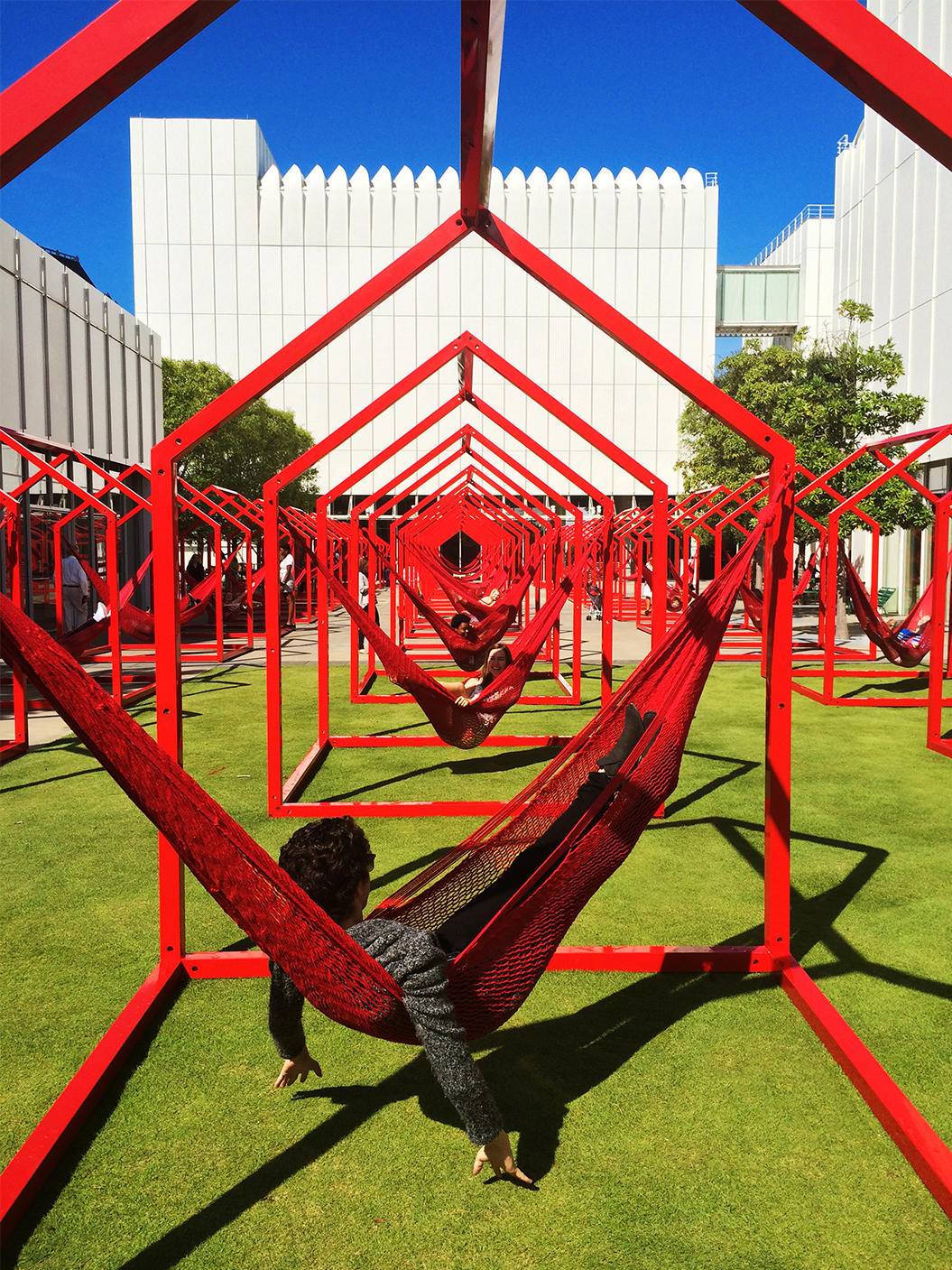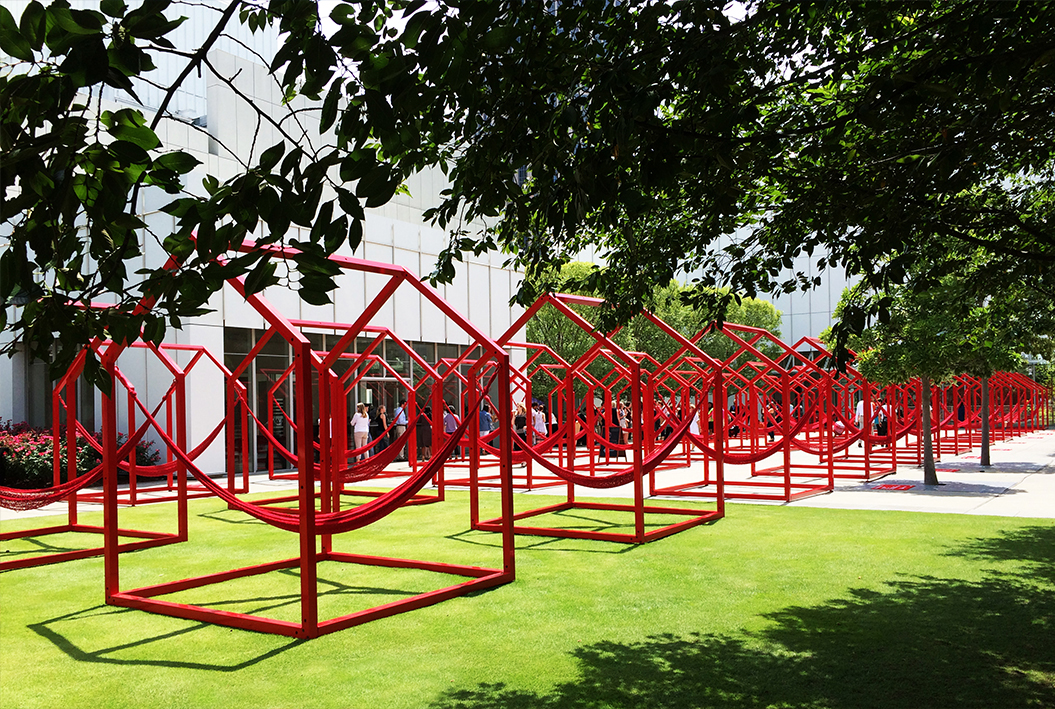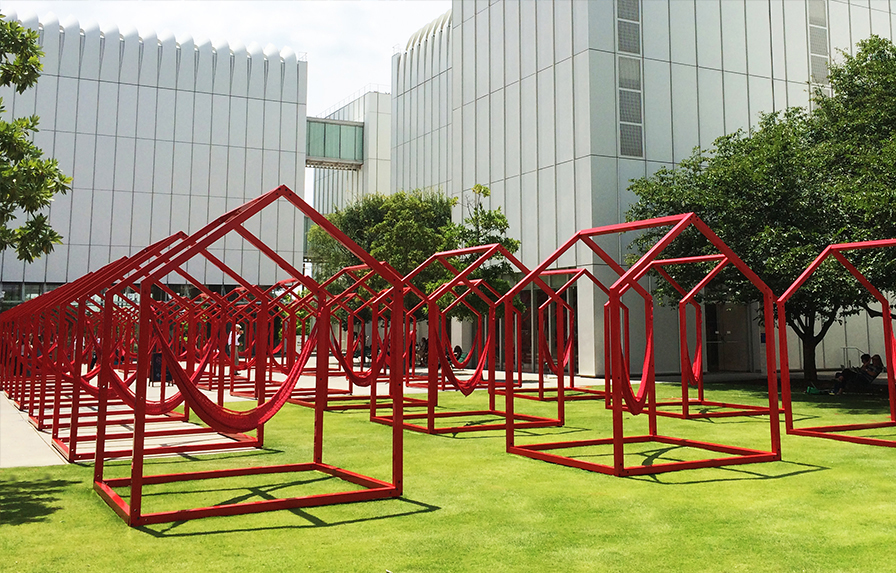Home is Where the Hammock is: Mi Casa, Your Casa by Esrawe
/Esrawe Invigorates Atlanta’s Woodruff Arts Center with a field of red metal houses.
Snapshot: Atlanta’s Woodruff Arts Center is the latest scene of Mexican firm Esrawe’s industrial design solutions, which here takes form as 40 red metal frame houses outfitted with detachable hammocks that dot the interior piazza of the institution.
Hector Esrawe founded his Mexico City based independent industrial design studio Esrawe on the idea that people can--and should--be linked directly to their surroundings, that each moment or context people find themselves in demands from them a basic physical or emotional need. Esrawe gives this notion depth and value by conceptualizing, designing, and manufacturing industrial solutions to these needs. Legitimizing his industrial designs are the numerous awards he’s won for everything from industrial manufactured furniture to interior projects both commercial and residential. Explaining his industrial designs are, quite simply, the designs themselves. Place them in the environment they were made to be placed in, insert the human element, and relish the scene of people finding creative and relaxing ways to dialogue directly with an environment they might previously have been a bit of stranger in.
Mi Casa, Your Casa provides just this type of interactive framework between human and environment. Tailor-made for the Woodruff Arts Center in Atlanta, Georgia as part of a two-year initiative meant to activate the Woodruff’s centrally located Sifly Piazza, it comprises 40 red, metallic house-shaped frames which function as a versatile, three dimensional canvas readily applicable to a variety of creative and relaxing uses. Like a playground with a tighter form and more compact purposes, the assortment of aligned houses are outfitted with detachable red hammocks that all but beg to be napped in. In the same way, the necessarily empty interiors of the houses all but beg to be inhabited by the people who give them contextual applicability by using them to interact with their environment.
The house shape is curious but appropriate: it’s meant to metaphorically, and perhaps subliminally, convey domestic comforts like warmth and hospitality that are cross-culturally desirable and instinctual. The metal base frames are simple borders in which a preschool class can sit without feeling confined, communicating the humanistic appeal of the Woodruff Center, but more specifically, the appropriation of Esrawe’s design scheme to all ages. This appeal is directly inspired by Latin American street markets where human interaction and connection is a daily and ubiquitous occurrence, and the choice of a color as vibrant as red is a stylistic reverberation of the same Latin American scene in which this dynamic occurs.
While the red bares witness to the design inspirations on one level, on another level it achieves the design impetus of enticement and invitation by contrasting with the pure whiteness of the buildings in which Sifly Piazza is situated, which were designed by architect Renzo Piano. It creates an identity that asks visitors to discover their own identity, as they marvel in wondrous confusion at just what it is that is occurring perceptually as the confront Mi Casa, Your Casa. Blurring these boundaries between style and function is more obvious, perhaps, when the houses are filled with individuals, groups of friends, or families young and old, that are each appropriated their area to their own joy and use, like a claimed cabana on a beach, and with the same amount of relaxation offered, but with a significant increase in inspiration and engagement.
The human thirst for understanding and merging with it’s physical context, for crossing the divide between the environment and the environmentally-induced reactions within, is a prominent feature in Esrawe’s projects and a standout element in Mi Casa, Your Casa, where it realizes the humanism fostered by an institution like Woodruff Arts Center and delves into those implications. These red houses invite exploration from both a structural and perceptual viewpoint, allowing children and adults from all backgrounds and dispositions to interface directly with the potential offered by this cultural, community-minded institution.
















